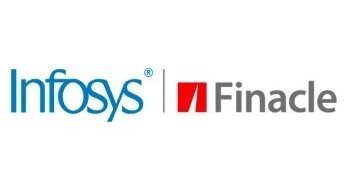What Is the Expected Size and Growth Rate of the Solar Artificial Intelligence Market?
The artificial intelligence in solar market has seen significant expansion in the past few years. From 2024 to 2025, the market size will increase from $0.92 billion to $1.06 billion, displaying a compound annual growth rate (CAGR) of 15.3%. Factors contributing to this growth include the rising desire to reduce electricity costs and energy wastage, a surge in investments within the solar industry, higher efforts towards carbon reduction, and escalating energy demand.
Rapid expansion is anticipated in the solar artificial intelligence market in the forthcoming years. The market is predicted to escalate to a value of $1.84 $ billion by 2029, boasting a compound annual growth rate (CAGR) of 14.9%. This growth during the projected period is linked to various factors such as the escalated implementation of solar energy systems, a heightened commitment to carbon emissions reduction, increased use of artificial intelligence, a growing emphasis on renewable energy sources, an increased need for sustainable energy solutions, and an escalating demand for solar power systems for agricultural activities. Leading trends during the predicted period include the incorporation of solutions driven by artificial intelligence, the integration of solar energy into existing power grids, advanced artificial intelligence technologies, innovative energy generation models, and technological advancements.
What Factors Are Fueling Growth in the Solar Artificial Intelligence Market?
The expanding interest in renewable energy is anticipated to push the solar artificial intelligence market’s growth forward. Renewable energy originates from continually replenishing natural processes, such as sun, wind, and water. This increased focus arises from the critical need to confront climate change, reduce greenhouse gas emissions, and is further supported by technological progression and dropping costs, which heighten these technologies’ feasibility and attractiveness. Solar artificial intelligence enhances the spotlight on renewable energy by bettering energy production through anticipatory maintenance and effective grid management. It also amplifies solar forecasting precision for improved integration into the power grid. For example, the U.S. Energy Information Administration, a U.S. governmental agency, reported in June 2023 that renewable energy accounted for around 13% of the total U.S. energy consumption in 2022, with the electric power industry utilizing 61% of it and renewables constituting 21% of U.S. electricity production. Therefore, the escalating concentration on renewable energy accelerates the growth of the solar artificial intelligence market.
Get Your Free Sample Now – Explore Exclusive Market Insights:
https://www.thebusinessresearchcompany.com/sample.aspx?id=19711&type=smp
Which Leading Companies Are Shaping the Growth of the Solar Artificial Intelligence Market?
Major companies operating in the solar artificial intelligence market are Nvidia Corporation, Trina Solar Limited, The AES Corporation, JinkoSolar Holding Co. Ltd., Enphase Energy Inc, SunPower Corporation, Heliogen Inc, SolarWinds AI, Waaree Energies Ltd, Suncast Corporation, Aurora Solar Inc, BrightSource Energy Inc, Tespack Ltd, TransitionZero, GreenMatch AG, Glint Solar AS, Scopito ApS, Absolar Solutions Ltd, Solarify GmbH, GetSolar LLC, Loggma Technologies Pvt Ltd, Omdena Inc., Raycatch Ltd., Smart Helio SA, Aigen Technologies Inc.
What Are the Major Trends Shaping the Solar Artificial Intelligence Market?
Leading businesses in the solar artificial intelligence sector are broadening their service portfolio by creating cutting-edge technologies, like AI-powered solar assembly robots, to increase productivity and decrease operational expenses. These AI-based solar installation robots are sophisticated systems that utilize artificial intelligence to streamline and maximize the location and fitting of solar panels, boosting accuracy and productivity while lowering labor expenses. For instance, in July 2024, AES Corporation, an energy firm based in the US, introduced Maximo, the first AI-powered solar installation robot capable of setting up panels in half the time and half the cost of conventional techniques. This robot incorporates AI-driven computer vision for exact panel positioning, continuous learning to enhance effectiveness, and image reformation for optimal operational efficiency in diverse settings. With Maximo, AES plans to set up 100 MW of solar capacity by 2025 and add up to 5 GW to its solar backlog over the coming three years, including major ventures like the 2 GW Bellefield solar-plus-storage project in California. The launch of Maximo is projected to result in the creation of innovative high-tech job opportunities and the involvement of a larger workforce, whilst also hastening the timeline of projects and augmenting the scalability of solar setups as the demand for renewable energy surges, motivated by elements such as the proliferation of AI and data centers.
What Are the Key Segments of the Solar Artificial Intelligence Market?
The solar artificial intelligencemarket covered in this report is segmented –
1) By Technology: Natural Language Processing, Machine Learning, Computer vision, Other Technologies
2) By Application: Energy Management, Smart Grids, Energy Production, Smart Meters, Demand Forecasting, Other Applications
3) By End-Use: Residential, Commercial, Industrial
Subsegments:
1) Natural Language Processing: Text Analysis, Voice Recognition, Chatbots
2) Machine Learning: Predictive Analytics, Pattern Recognition, Data Mining
3) Computer Vision: Image Recognition, Object Detection, Video Analysis
4) Other Technologies: Robotics, Expert Systems, Neural Networks
Pre-Book Your Report Now For A Swift Delivery:
https://www.thebusinessresearchcompany.com/report/solar-artificial-intelligence-global-market-report
Which Region Dominates the Solar Artificial Intelligence Market?
Asia-Pacific was the largest region in the solar artificial intelligence market in 2024.
What Is Covered In The Solar Artificial Intelligence Global Market Report?
– Market Size Analysis: Analyze the Solar Artificial Intelligence Market size by key regions, countries, product types, and applications.
– Market Segmentation Analysis: Identify various subsegments within the Solar Artificial Intelligence Market for effective categorization.
– Key Player Focus: Focus on key players to define their market value, share, and competitive landscape.
– Growth Trends Analysis: Examine individual growth trends and prospects in the Market.
– Market Contribution: Evaluate contributions of different segments to the overall Solar Artificial Intelligence Market growth.
– Growth Drivers: Detail key factors influencing market growth, including opportunities and drivers.
– Industry Challenges: Analyze challenges and risks affecting the Solar Artificial Intelligence Market.
– Competitive Developments: Analyze competitive developments, such as expansions, agreements, and new product launches in the market.
Unlock Exclusive Market Insights – Purchase Your Research Report Now!
https://www.thebusinessresearchcompany.com/purchaseoptions.aspx?id=19711
Connect with us on:
LinkedIn: https://in.linkedin.com/company/the-business-research-company,
Twitter: https://twitter.com/tbrc_info,
YouTube: https://www.youtube.com/channel/UC24_fI0rV8cR5DxlCpgmyFQ.
Contact Us
Europe: +44 207 1930 708,
Asia: +91 88972 63534,
Americas: +1 315 623 0293 or
Email: mailto:info@tbrc.info
Learn More About The Business Research Company
With over 15,000+ reports from 27 industries covering 60+ geographies, The Business Research Company has built a reputation for offering comprehensive, data-rich research and insights. Our flagship product, the Global Market Model delivers comprehensive and updated forecasts to support informed decision-making.
This release was published on openPR.














